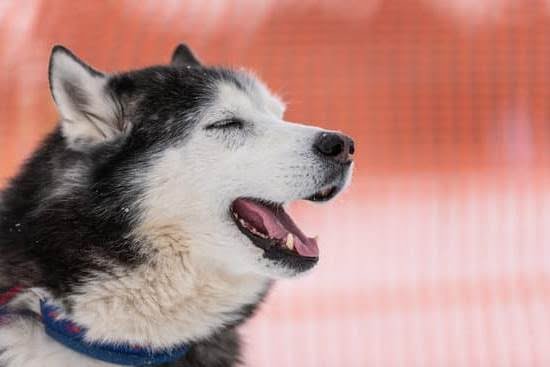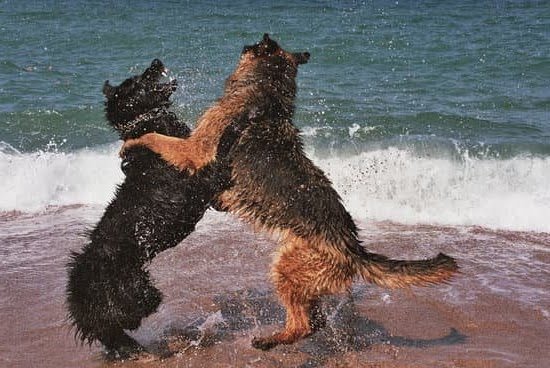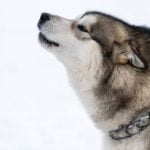Introduction
Having a hunting dog can be incredibly beneficial when pursuing game. Not only does it make finding and retrieving grouse much easier and more efficient, but it can be a great bonding experience for both you and your canine friend. Training your own hunting dog puts into your hands the ability to create an ideal hunting partner that suits your style of hunting. Like all other forms of dog training, you’ll need patience and consistency in order to ensure that your pup has a successful education in pursuing grouse.
Preparation: Materials Needed
Before beginning any form of dog training, having the necessary materials on-hand is paramount for guaranteeing success. When training a pup to hunt grouse, some essential items needed are: a long lead or tracking line, whistle (or some other audible command tool), treats or rewards, dummy birds (preferably with scent imprinted), stopwatch or timer, and anything else deemed necessary by the hunter (hiding places like tall grasses, etc.). Additionally, if need be – things like nutritional supplements are recommended to maintain proper energy levels throughout their new strenuous lifestyle. With these essentials organized ahead of time, you’ll save yourself the hassle of running back and forth while they should be focusing on the task at hand!
Selecting the Right Dog Breed for Hunting Grouse
When selecting a dog breed to hunt grouse, it’s important to choose one that comprehends commands quickly, has keen awareness and good nose power. Breeds such as English pointers, Brittanys, Vizslas, and German shorthaired pointers are known for having these qualities.The Labrador retriever is a popular choice as well due to its intelligence and loyalty. Not only are these breeds known for having the right instincts for grouse hunting, but they also have the capability to retrieve game with poise. Additionally, many of these breeds have an increased capacity for fetching objects over long distances; this is essential when hunting grouse as these birds take flight often and require refined stamina when tracking. Lastly, you should ensure that the specific dog you select is healthy with no injury limitations or potential medical conditions that could affect its physicality while on the hunt.
Establishing the Basics of Hunting Dog Training
Before you begin teaching your dog the basics of grouse hunting, it’s important for you to have a good understanding of what it takes to be a successful hunter. You will need patience and consistency in training in order to set your dog up for success when they are out on their own. Start by teaching them how to respond to commands that you give such as “sit,” “come,” “stay,” and “heel.” Once they know these commands, it’s time to introduce them to the game bird using lures or with live pigeons placed on a string. This way, your dog can learn how to identify and search for game birds by sight and scent. Additionally, teach your dog about gun safety by having someone else shoot blanks during practice sessions. Finally, take your pup out on real hunts so that they get used to being around live game birds. As long as you are patient and consistent in reinforcing the drills and lessons taught during puppyhood, then you should have no problem training your pup into a successful hunting companion.
What Gear and Tools are Needed for Grouse Hunting?
The first and most important item you will need to purchase when training your dog to hunt grouse is an e-collar. An e-collar is a collar with an electronic receiver, usually controlled by a handheld remote, that emits both audio and shock/vibration warnings when your dog misbehaves. This type of collar allows you to train your dog without being physically close or speaking directly to them and should be useful for setting boundaries, correcting overzealous behavior, focusing focus, and rewarding good behavior at a distance.
In addition to the e-collar, other tools and gear needed for grouse hunting include a bird launcher or thrower. A bird launcher can be used to simulate real flights shot in the field so the dog can become accustomed to flushing game birds from their hiding places before they are pursued. A basic model should suffice but it may be beneficial in the long run to purchase a product outfitted with extra features such as adjustable launch angles and distance capabilities.
Other equipment necessary for safe and successful grouse hunting includes a birds kill pouch in which shots birds can be collected; binoculars which will come in handy during spotting; a gun bag that meets transport regulations if firearms are used; protective earmuffs if shooting amplified sound blanks; check cords or leashes so you can control your dog’s movements while they are hunting; scents such as fake urine or game lures; flags if walking through tall grass; proper apparel like camouflage clothing designed for waterfowl shoots; water bottles for hydration on hot days or when hiking challenging terrain; snacks like treats or jerky sticks for keeping energy levels up; whistles for signaling commands from far away distances.
Training Techniques to Encourage Positive Reinforcement
Training a dog to hunt grouse can be a rewarding experience for both the dog and the hunter. It is important to use positive reinforcement techniques by rewarding your dog when they do something correctly. This will encourage them to continue to perform correctly and hunt with enthusiasm. When planning your training, keep in mind that repetition is key because you want your dog to become accustomed to performing certain tasks reliably each time they’re asked.
One technique you should use when training a dog to hunt grouse is the effective “heading” or “lining” method, where you are leading your dog through the area hunting for grouse while always staying on the correct path. This will help teach them how to properly cover ground while searching for game bird targets when out in their field of play. You can utilize treats or toys as positive reinforcement along the way if it helps motivate your pup as well as maintaining a consistent pace throughout the course of training sessions.
It’s also important for dogs learning how to hunt grouse that they have enough physical stamina and endurance for long-term pursuit of game birds; this could require additional conditioning or frequent breaks during training times depending on their age and breed type. Finally, focus on building confidence in the pup so they feel relaxed and comfortable even when searches yield no success; positive reinforcement speaks louder than negative critiques!
Hunting Patterns and Signals of Grouse
When training a dog for grouse hunting, it is important to be aware of the various hunting patterns and signals of the grouse species. Knowing which components of grouse behavior are essential to a successful hunt, such as the sound of their wings and feet scratching against trees or rocks, will be key in teaching your dog how to location and hunt these birds. Additionally, when teaching your dog about the behavior associated with grouse hunting, make sure to pay special attention to flush cues as well. Flush cues help indicate when a dog should begin searching for game once a bird has been flushed from its hiding place. Be sure to teach your pup different types of signals they can use while on a scent trail such as barking or jumping. You can even create a patchwork of scents just outside the area you plan on hunting by scattering kitchen scraps like raw bell peppers, grapes, or popcorn kernels; this could help attract nearby grouse allowing your dog to catch onto their scent quickly. Whether you’re out in the field or practicing indoors, studying and teaching your pup these behaviors before going out into the wild can greatly improve their performance while in pursuit of a hungry grouse!
Tracking and Flushing Strategies for Grouse
Grouse hunting is a rewarding experience for both humans and dogs alike. It requires patience, repetition, and dedication to make sure the training is successful. To begin the process of training a dog to hunt grouse, first start by introducing them to tracking. By teaching the dog how to recognize signs of animals such as tracks, droppings and feathers, they can gain an understanding of where to look for grouse on their own. Also providing your pup with a scent article that contains grouse scent will help set him up for success when out in the field.
Once your canine companion has been exposed to tracking, you can move on to flushing. This is where you will teach your dog how to flush out or scare a bird into the open where it becomes an easier target for hunters. Depending on the size and age of your pooch, you may need it to stay close in order for it use its sense of sight and hearing in combination with its nose when it come across grouse hiding place in thick cover or within dense vegetation. Teaching commands such as ‘hunt’ or ‘flush’ from a distance can be beneficial because if part of grouse habitat becomes inaccessible due to terrain or other hunters, with these commands executed from afar can encourage birds into taking flight from safe distances.
Overall training a dog for grouse hunting might take some time but offers limitless rewards; not only do these skills help increase harvest numbers but provide years and years of unforgettable experiences outside with man’s best friend!
Strategies to Improve Hunting Skills and Avoid Common Mistakes
Successfully training a dog to hunt grouse can be both rewarding and challenging. Here are some tips to help your pup become an effective, successful grouse hunter:
1. Start with basic obedience commands to make sure your puppy knows how to respond to verbal cues from you like “sit”, “stay”, “come here” and “heel”. You want the dog to understand what you expect of them before starting the hunt.
2. Introduce your dog to the area that you will be hunting in during the season so they become familiar with their surroundings and terrain of the area where grouse hunting will take place.
3. Give your pup plenty of chances for scenting practice by introducing them early on in their development process with game birds like partridge or chickens. This will help them gain a sense of smell and acclimatize themselves to types of bird scent found in a normal hunting environment along with increasing their confidence in tracking birds successfully.
4. When your pup is ready move onto having them track more difficult scents like wild grouse and quail until they are able to identify each type easily without mix-up errors.
5. Provide lots of reinforcement when they track a bird correctly, this will further improve confidence levels in a hunting environment and also increase focus on tracking game efficiently not wasting time flushing out false trails caused by wind changing sudden or other environmental elements that might confuse the dog at times leading them down dead ends or false paths causing an unsuccessful tracing session or day out chasing birds around wildly with no clear focus always ending up getting lost!
6. Make note any negative behaviors observed during hunts as these can cause problems later leading losing site of game while trying incorrect tactics such as bumping into vegetation while flushing out targets instead sticking close by handler’s side trusting him/her indicating direction that he/she should follow using voice commands like “There it goes” rather than unnecessarily running up ahead. This can often result in game escaping back into cover potentially spoiling entire hunt which might have been fruitful if tactics were just slightly different or even non-existent!
Safety Tips for Hunting with Your Dog
Although training a dog to hunt grouse can be a rewarding and fun experience, it is important to keep safety in mind. Being prepared and following certain safety guidelines can help protect both you and your dog while out hunting. Here are some tips to consider while hunting with your dog:
1) Make sure your pup is up-to-date on vaccinations and other preventative health care, as this will help keep both of you safe from any diseases or illnesses that may be present in the field.
2) Equip yourself and your pup with protective gear such as safety vests, high visibility collars, and reflective leashes for low-light situations.
3) Keep the leash short at all times, even if the the terrain allows for more freedom. That way, you can easily prevent any unwarranted chasing or potentially dangerous situation if need be.
4) Always make sure you bring plenty of fresh water for yourself and your pup – getting dehydrated is much harder to spot on a dog than it is on a human!
5) If possible, identify areas where there might be poisionous plants or wildlife that could harm your pup before you hit the trails together. This could save your pup from an uncomfortable – or worse – medical emergency in case they manage to get too close!
6) Invest in a quality GPS tracking device so that you are able to locate the exact location of both yourself and your pup at all times – just in case either one of you gets lost during the hunt.
7) Remember that dogs need breaks just like humans do! Pushing them too hard can lead to exhaustion so remember to let them rest or give them plenty of breaks throughout the day.
8) Lastly – practice patience when teaching a new command or hunting technique – being too harsh towards a pup isn’t going to get results but will instead teach them fear which defeats the purpose of what we’re trying to achieve here!
Wrapping Up
After your training is complete, it is essential to keep your dog up to date with various hunting skills and also ensure their health. Consider taking them on regular practice runs so they stay familiar with the terrain and develop an effective strategy for locating grouse. Additionally, make sure you keep their diet high in protein and nutrients to build a strong frame to sustain throughout the hunting season. Speak to your vet about supplementing their regular routine with Vitamin C, Echinacea, Garlic and other supplements. Lastly, create an achievable schedule that fits within your daily routine to do quality training sessions before every hunt. Always give yourself plenty of time to properly prepare both mentally and physically; this will help you guarantee success when it’s time for you and your dog go after those bird.

Welcome to the blog! I am a professional dog trainer and have been working with dogs for many years. In this blog, I will be discussing various topics related to dog training, including tips, tricks, and advice. I hope you find this information helpful and informative. Thanks for reading!





